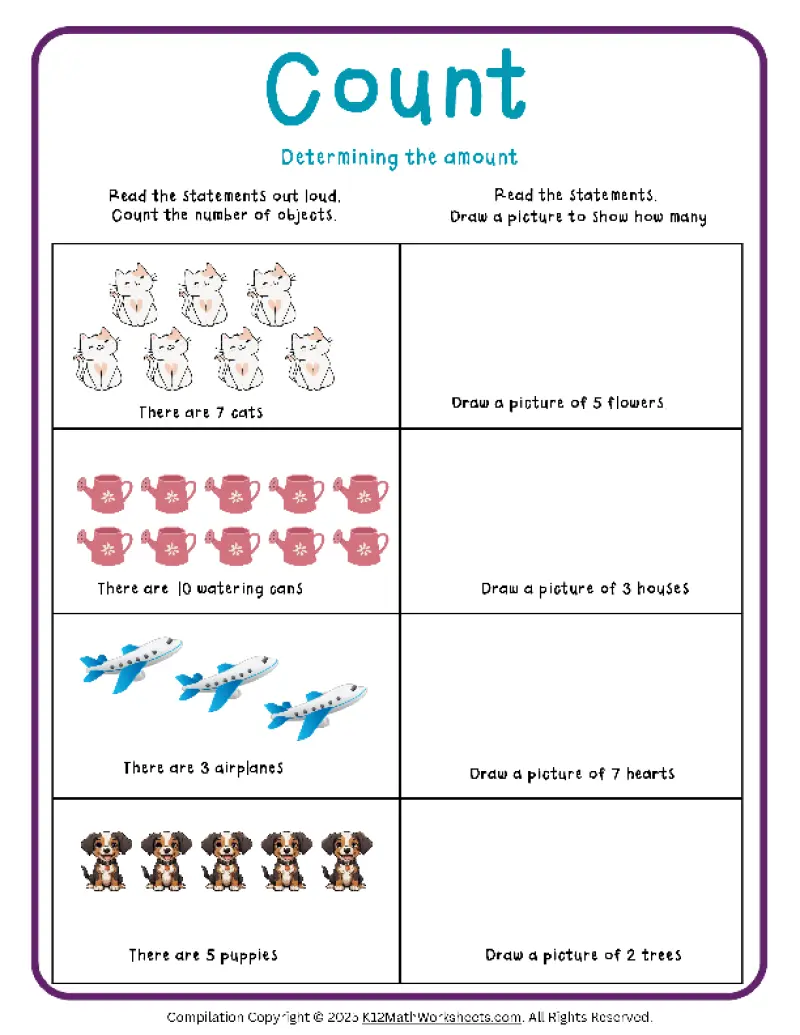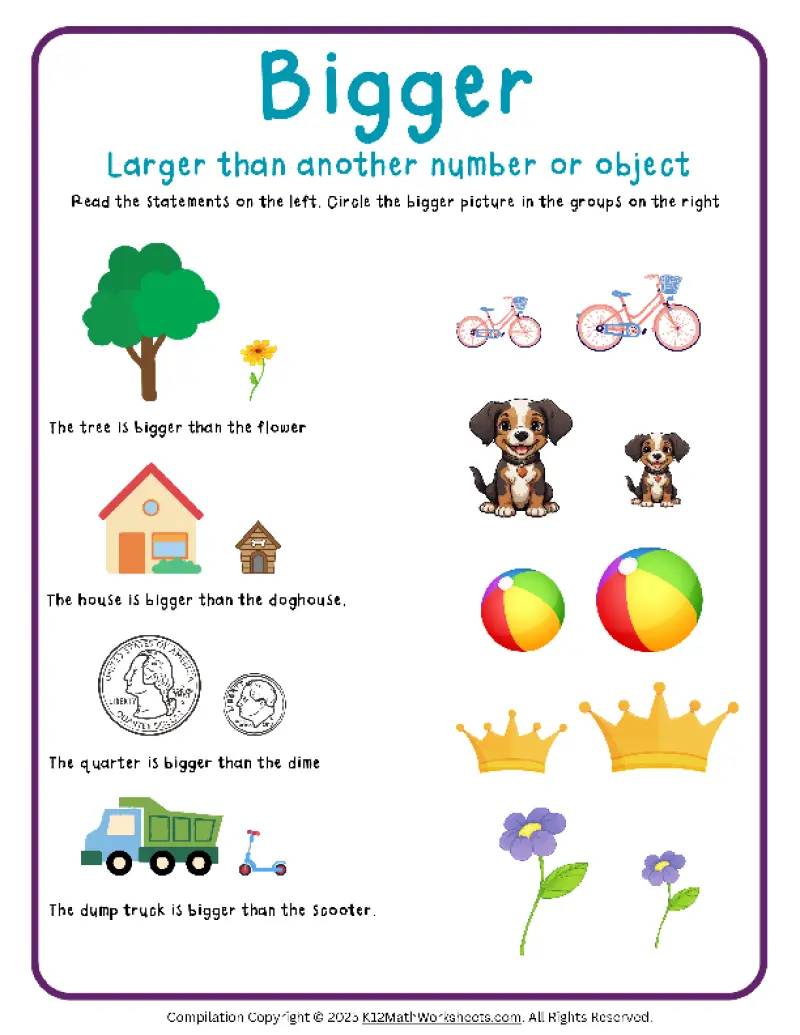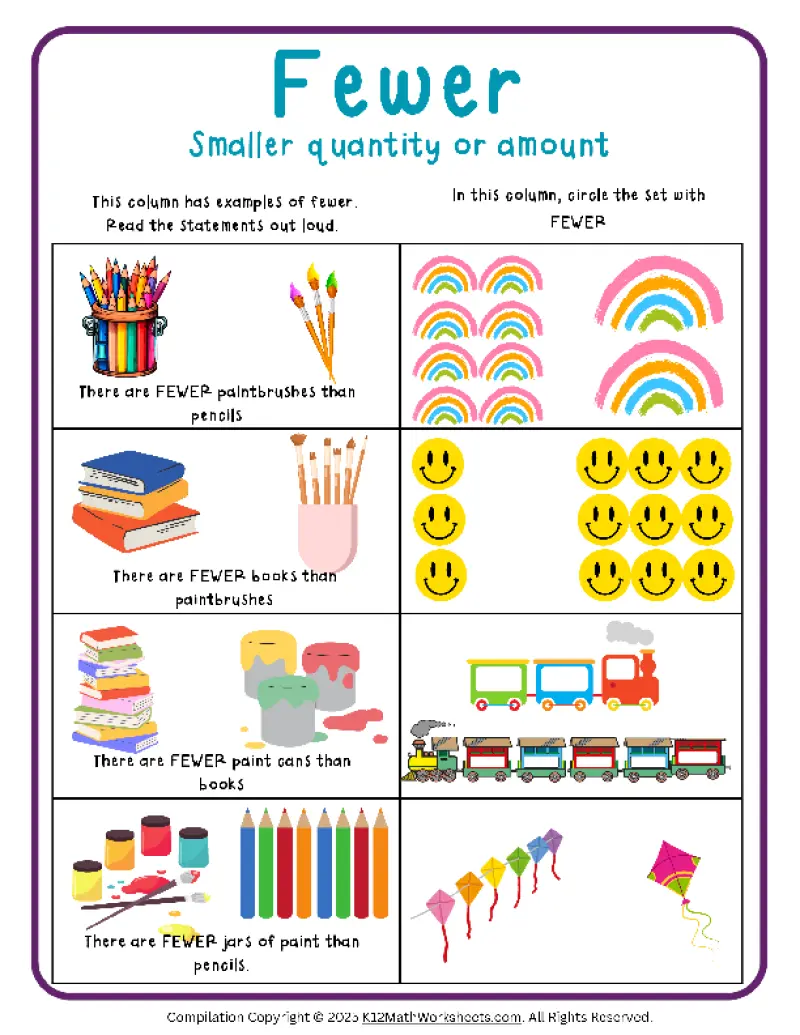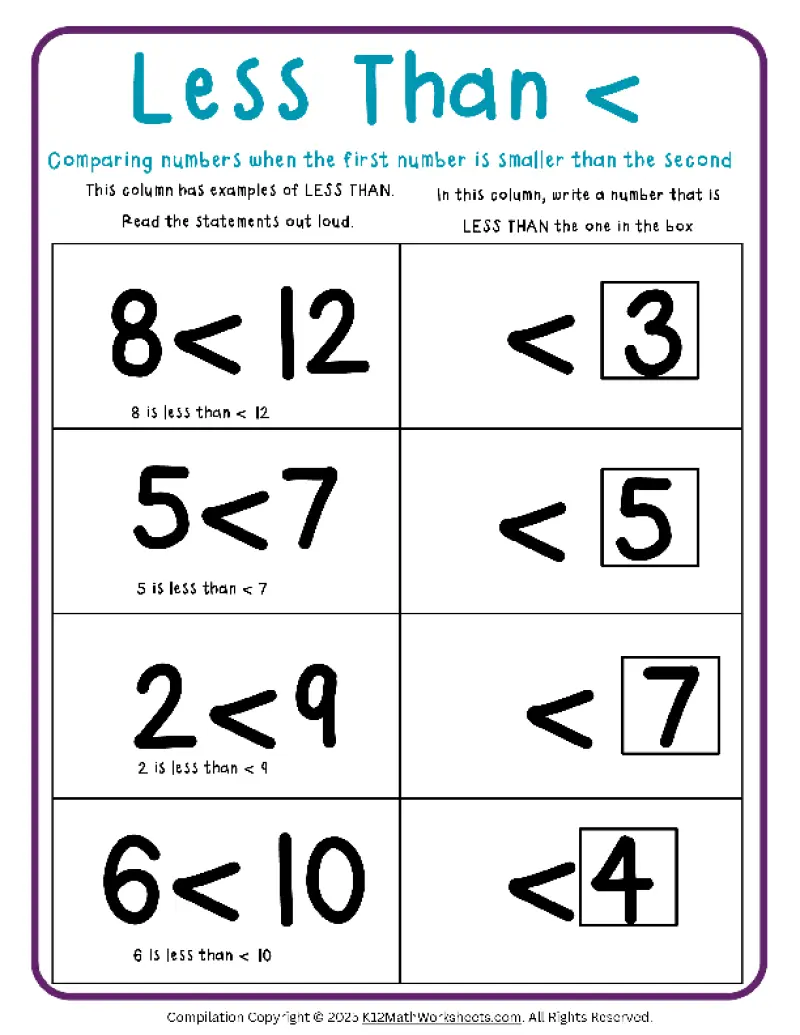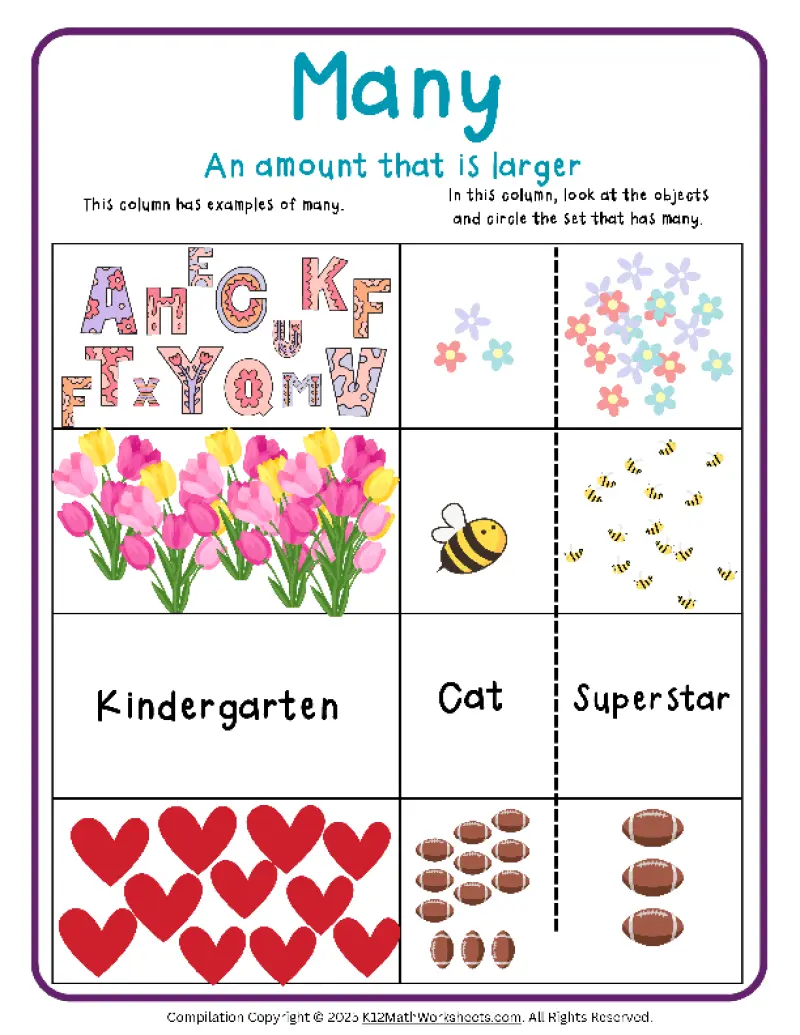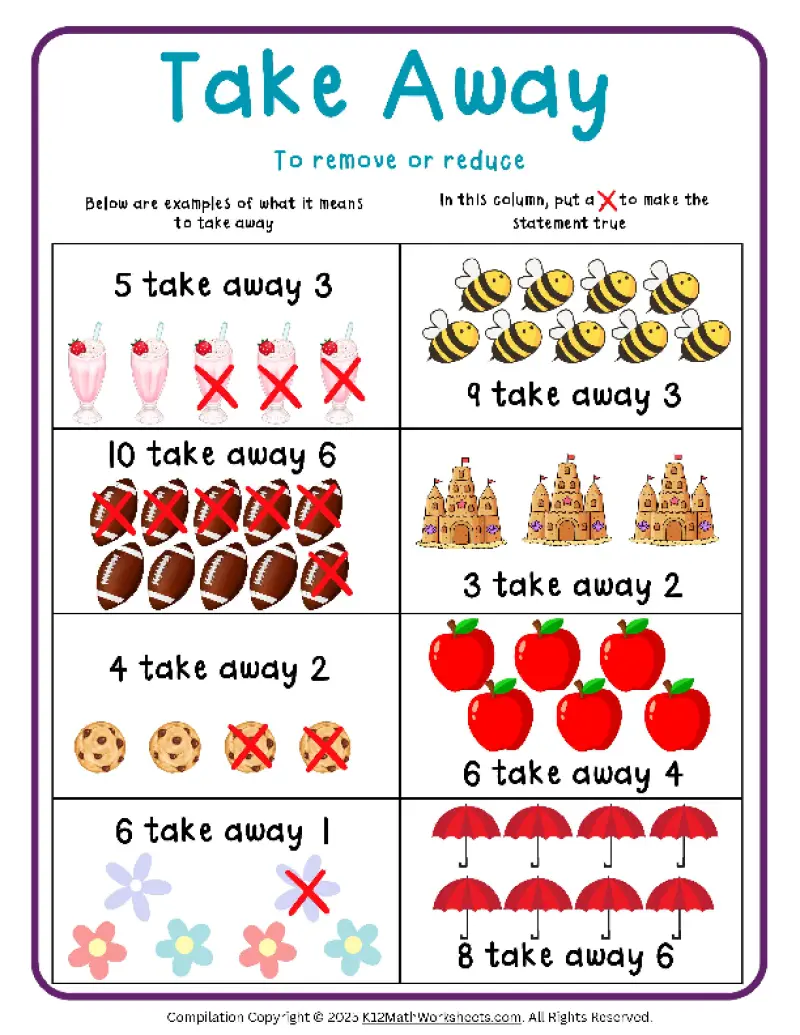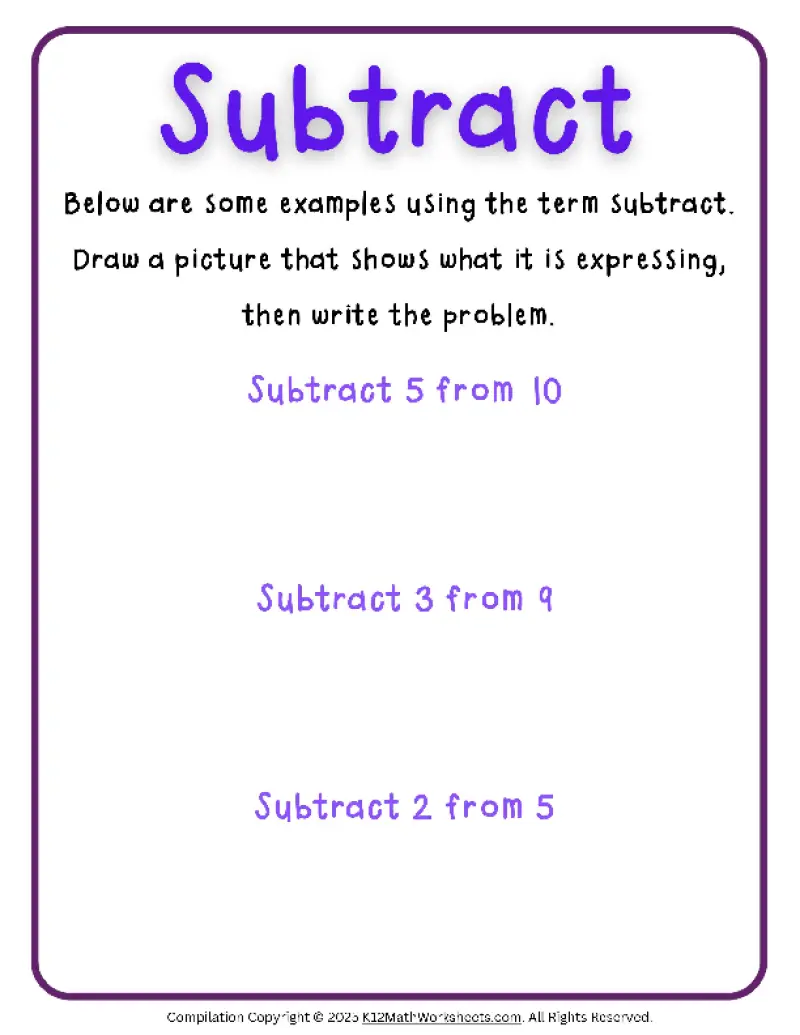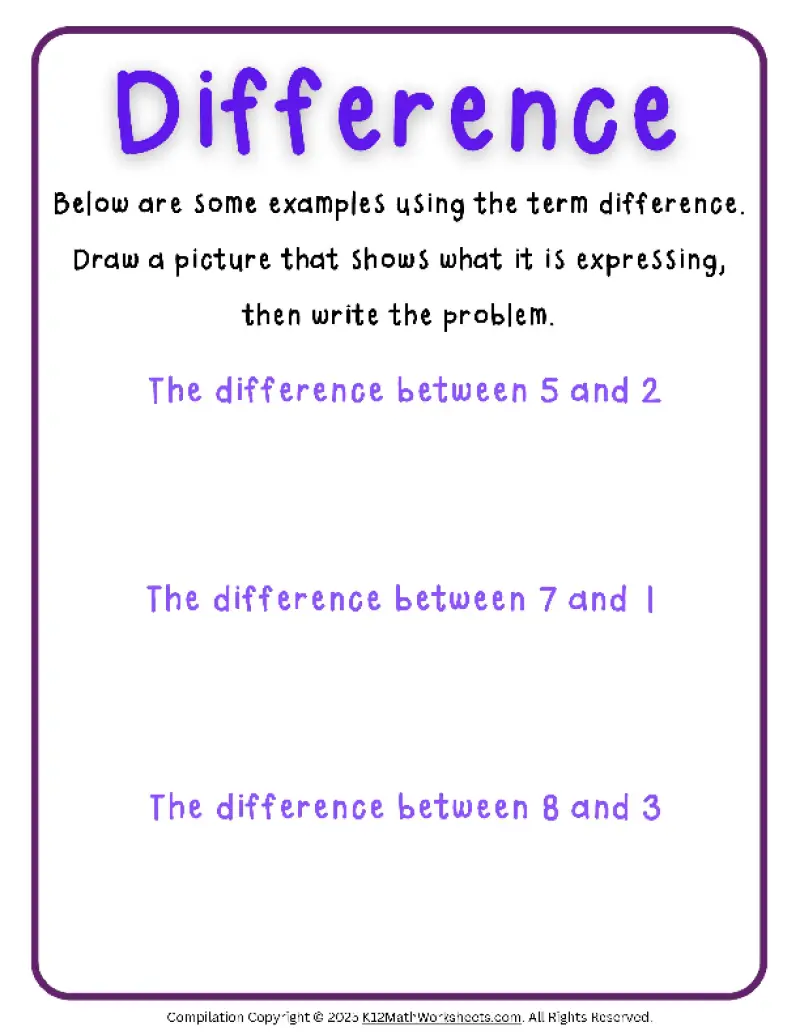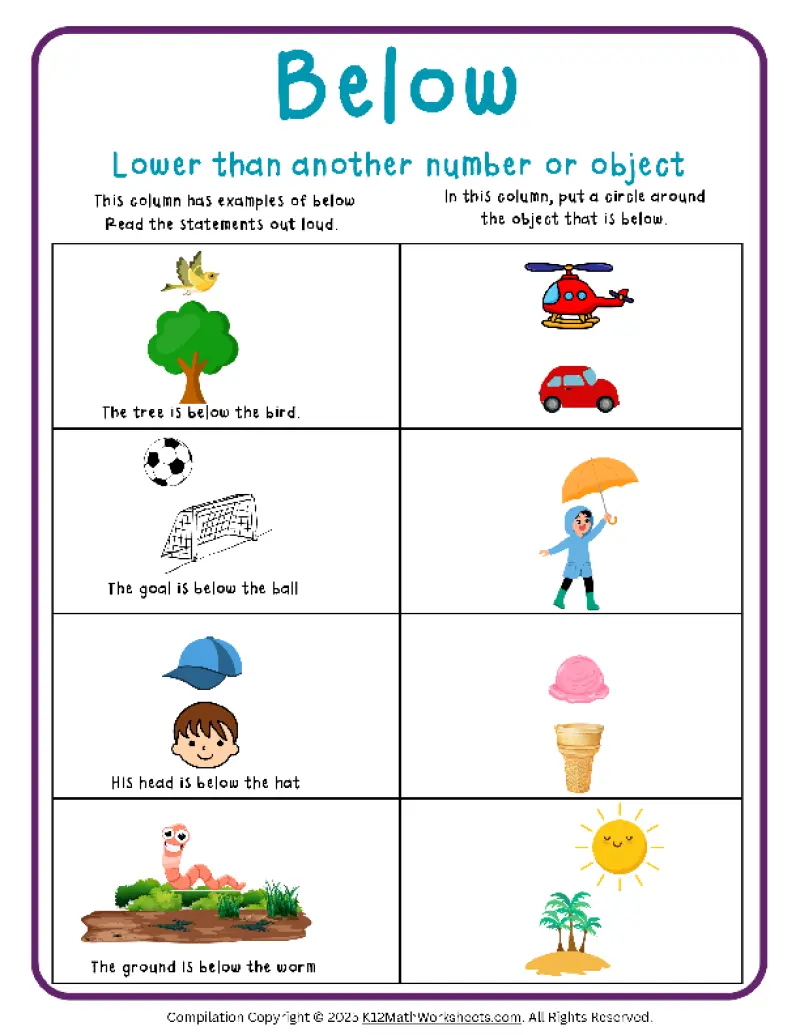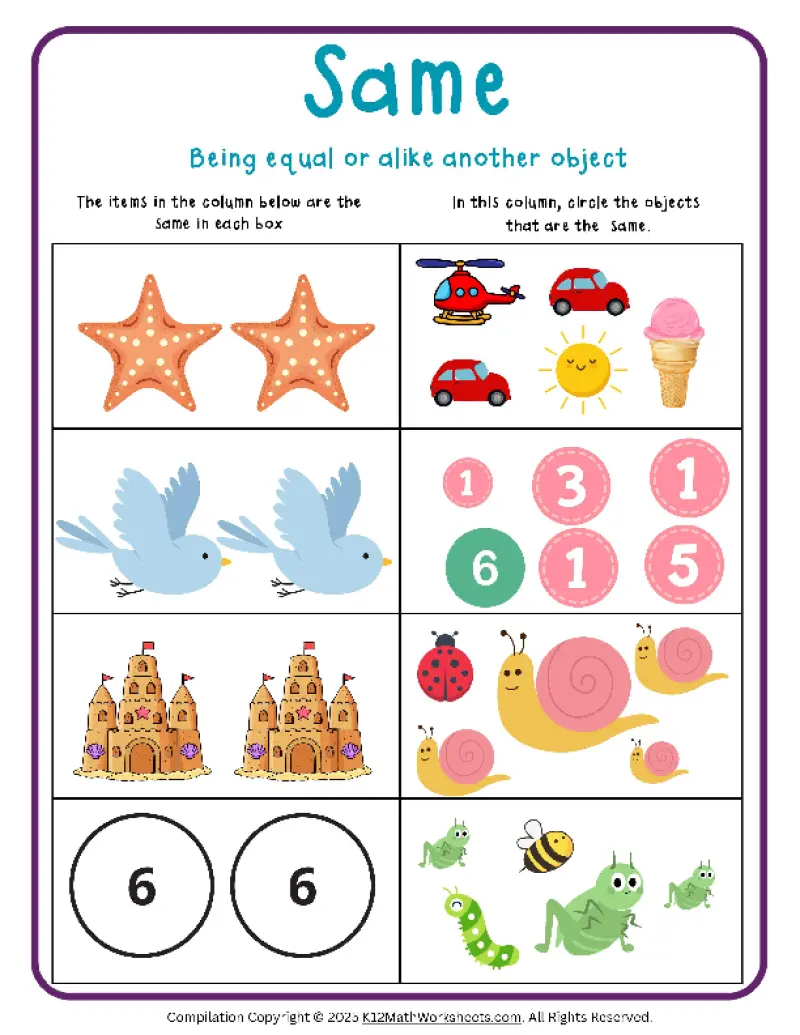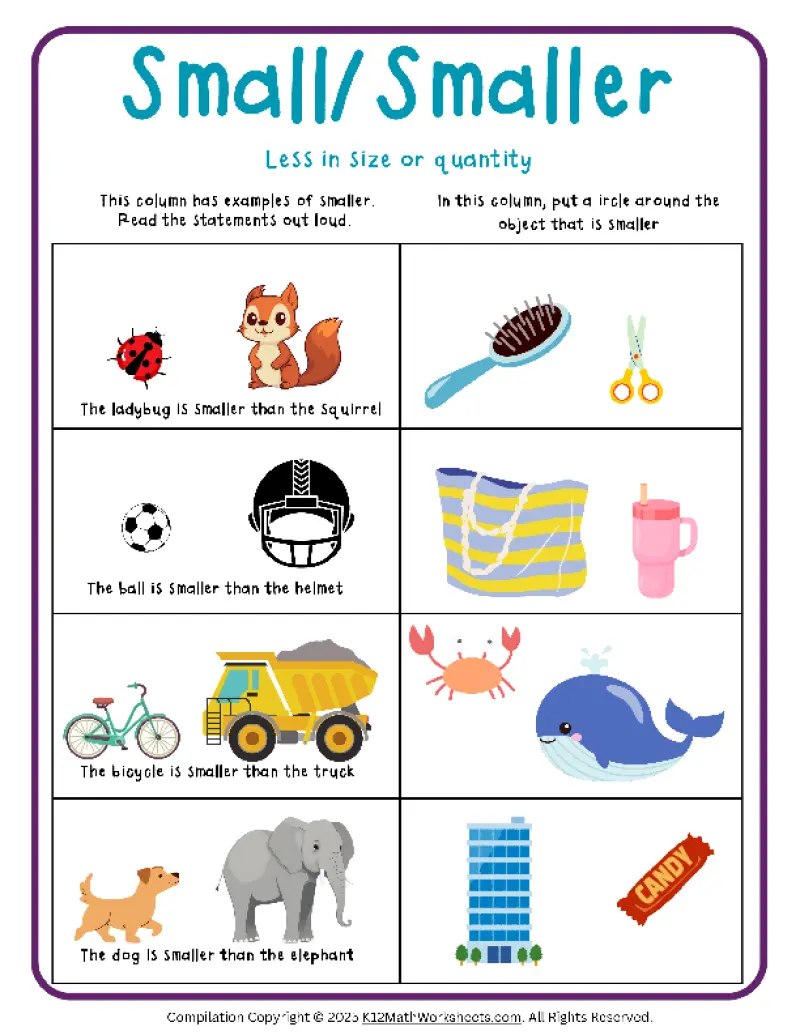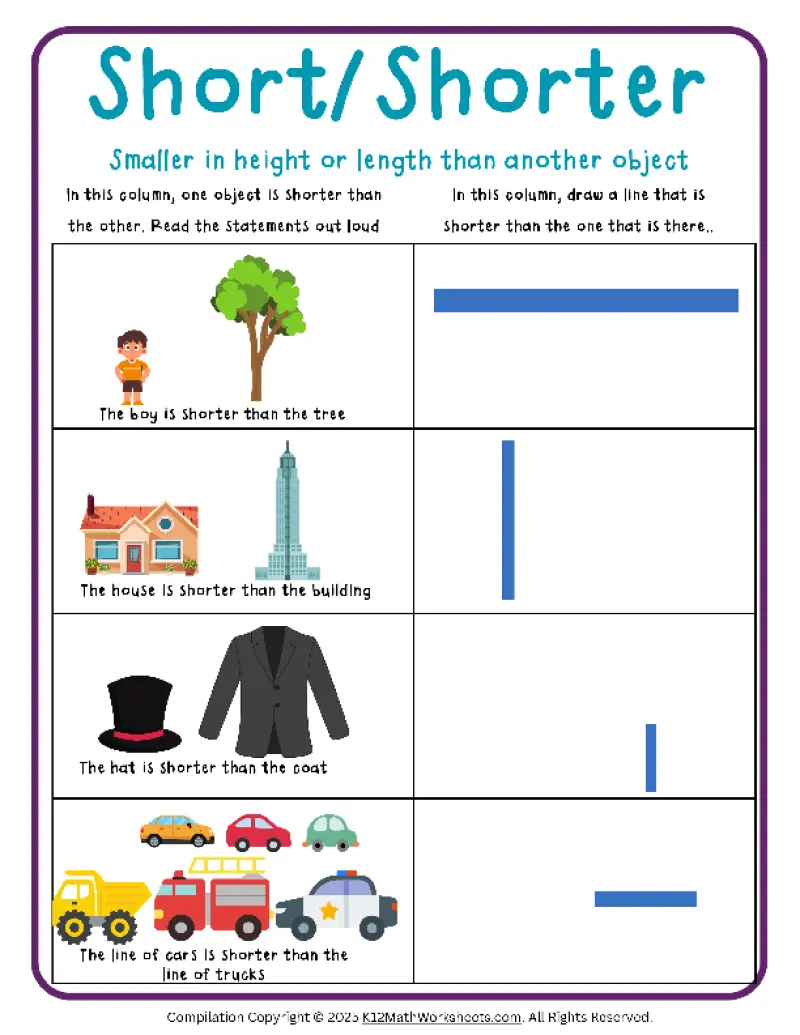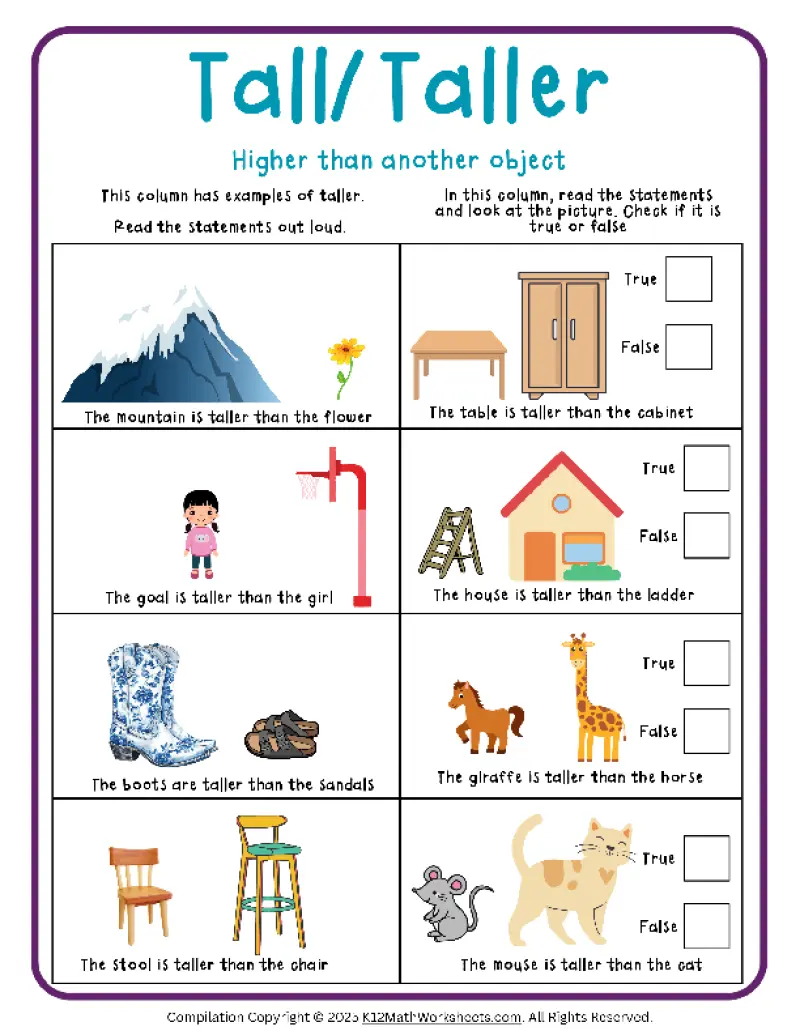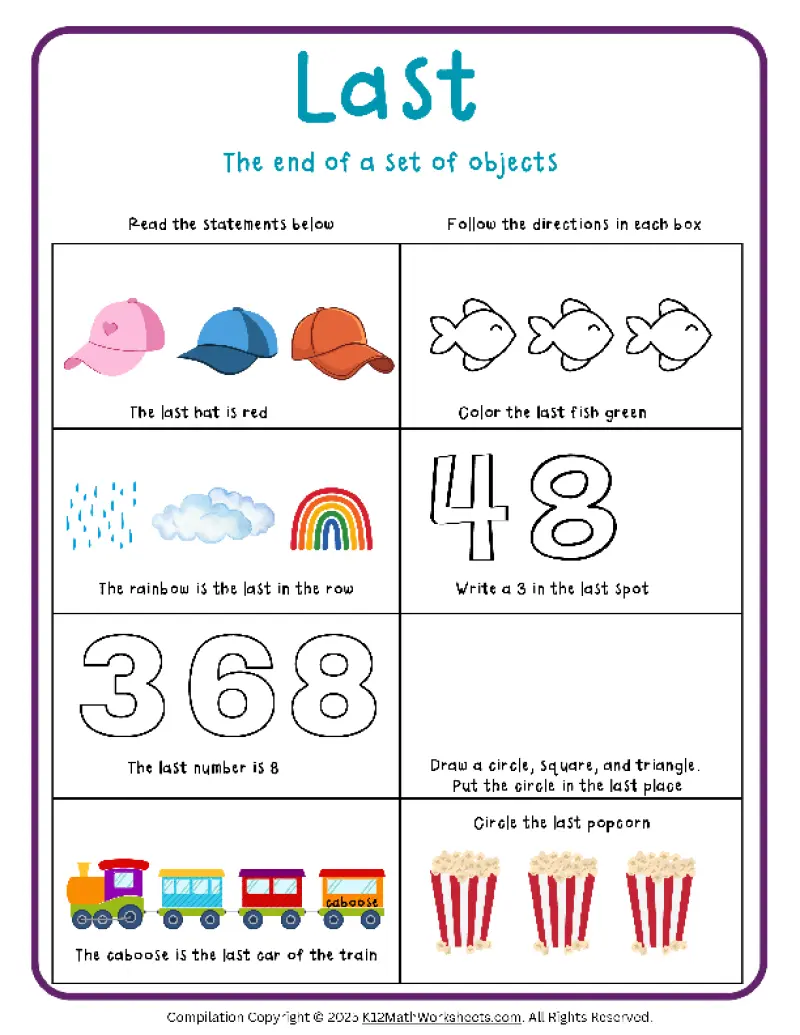Math Vocabulary Words Worksheets
Math Vocabulary Words Worksheets
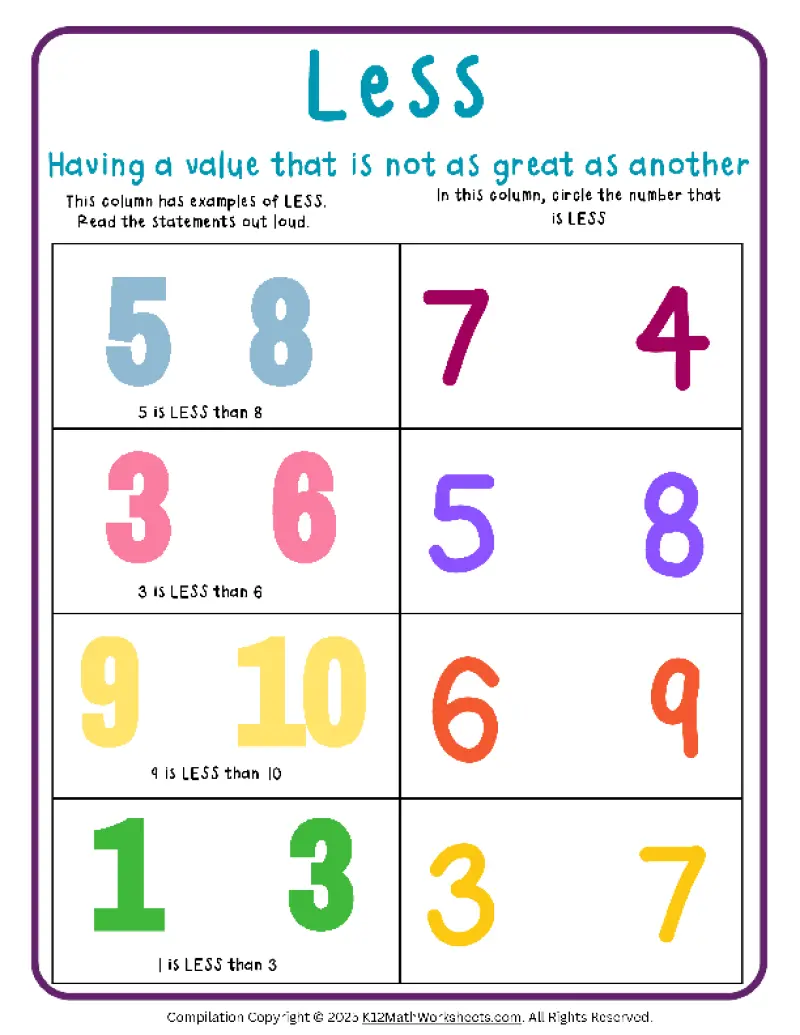
These colorful math vocabulary words worksheets help young children learn important math words they’ll use throughout school. Designed for kids ages 4-6 (Pre-K through kindergarten), each worksheet uses pictures and simple activities to teach essential math terms.
Your child will learn words about counting, comparing things (bigger/smaller, heavier/lighter), describing positions (above, below, behind, beside), and basic addition and subtraction vocabulary. The picture examples make these concepts easy to understand for young learners. These worksheets work great for teaching at home, homework practice, or extra help for children who need more practice with these important math words and concepts.
Math Vocabulary Words - Comparison and Operations
This first section introduces essential vocabulary for mathematical comparisons and basic operations. Young learners will explore foundational concepts like “count,” “bigger,” and “smaller” that help them understand quantity relationships. The worksheets progress to introduce early arithmetic language including “take away,” “add to,” “subtract,” and “reduce,” giving children the vocabulary they need to express mathematical thinking. Each worksheet provides visual examples and simple activities to reinforce these important terms.
Determine the amount and draw a picture to show how many.
Circle the bigger picture in the groups on the right.
Put a circle around the object that is smaller.
Circle the set with fewer.
Circle the number that is less.
Write a number that is less than the one in the box.
Look at the objects and circle the set that has many.
Put a X to make the statement true.
Draw a picture that matches the statement.
Here are some examples of words associated with subtraction.
Draw a picture that shows what these examples are expressing, then write the problem.
Draw a picture that shows what these examples are expressing, then write the problem.
Draw a picture that shows what these examples are expressing, then write the problem.
Draw a picture that shows what these examples are expressing, then write the problem.
Here are some examples of words associated with addition.
Math Vocabulary Words - Positional and Attribute Vocabulary
This second section focuses on spatial relationships and descriptive mathematical language. Children will learn positional terms like “above,” “below,” “behind,” and “beside” that help them understand location and orientation. Additional worksheets introduce important comparative concepts including “same,” “alike,” “heavier,” and size descriptors like “small/smaller” and “tall/taller.” The section concludes with sequential vocabulary (“first,” “middle,” “last”) that supports both mathematical ordering and following multi-step directions. These terms are essential for developing spatial reasoning and following mathematical instructions.
Pit a triangle around the object that is above.
Put a circle around the object that is below.
Put a circle around the object that is behind and fill in the sentence with the correct word.
Put a circle around the correct object.
Circle the objects that are the same.
Write how the objects are alike.
Put an X over the heavier object.
Put a circle around the object that is smaller.
Draw a line that is shorter than the one that is there.
Read the statements and look at the picture. Check if it is true or false.
Follow the directions in each box: Circle the first object.
Follow the directions in each box: Color the middle kite orange.
Follow the directions in each box: Write a 3 in the last spot.
Tips for Using These Math Vocabulary Words Worksheets
- Create Math Vocabulary Word Walls: After completing each worksheet, add the featured vocabulary word to a classroom or home word wall with a simple drawing. This visual reference helps reinforce the terms throughout the year and gives children a reference point when they encounter these words in other contexts.
- Use Manipulatives for Reinforcement: Pair these worksheets with hands-on manipulatives that demonstrate the same concepts. For example, when working on “bigger/smaller,” provide children with different-sized blocks to sort, or when learning “behind/beside,” use small toys to practice positioning objects.
- Incorporate Movement Activities: Turn these vocabulary words into action games—have children demonstrate “above” and “below” with their bodies, or play a game where they must find classroom objects that are “heavier” or “smaller” than a reference item.
- Connect to Everyday Scenarios: Help children apply these terms in daily activities by using the vocabulary consistently. During snack time, ask “Who has more crackers?” or when lining up, discuss who is “behind” or “in front of” someone else. These real-world connections strengthen understanding.
- Scaffold Learning with Sequential Use: Begin with the basic comparative terms (bigger/smaller, more/less) before progressing to the operation vocabulary (add/subtract). This sequence builds conceptual understanding before introducing more abstract mathematical processes.
- Use Discussion Questions: After completing each worksheet, ask open-ended questions like “How do you know this object is heavier?” or “What happens when we take away 2?” This encourages children to verbalize their mathematical thinking using the target vocabulary.


